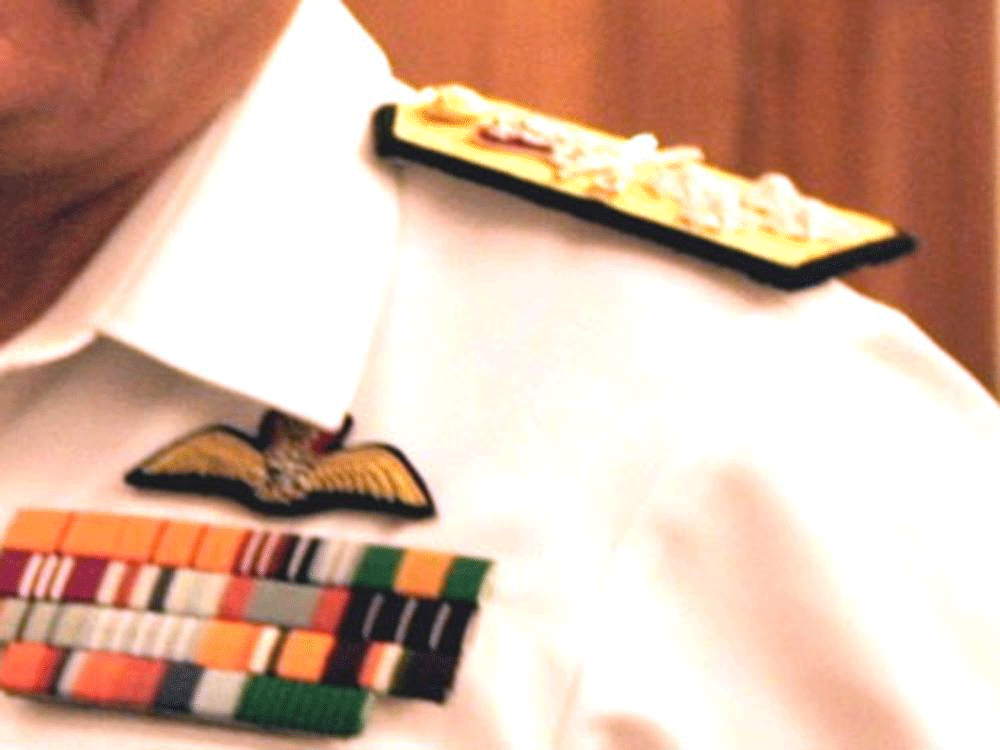After the recent Pulwama terrorist attack and the Indian Air Force (IAF) strike on Balakot, all the three Services have been on the highest state of operational alert. During the tri-Services briefing on February 28, 2019, Rear Admiral D S Gujral, the Assistant Chief of Naval Operations, had clearly said, “the Navy is deployed in a high state of readiness and remains poised on surface, under sea and in air to deter, prevent and defeat any misadventure by Pakistan in the maritime domain”.
While the IAF and the army actions have been beamed live into our homes by TV channels, the navy, often called the ‘silent service’, patrols the oceans far out of sight of the civilian population. Warships of the Western Fleet, the Indian Navy (IN)’s ‘sword arm’ and submarines would have already sailed out to their designated battle stations and surveillance aircraft would be scouring the seas looking for the enemy.
On March 5, the Pakistani media reported that the Pakistan Navy had detected and thwarted an attempt by an Indian submarine to enter Pakistan’s territorial waters the previous evening. The reports showed what looked like infra-red pictures of a submarine ‘snorting’ on surface, possibly taken from a Pakistan Navy P3C Orion aircraft.
Stealth and surprise are the attributes of a submarine and it is most unlikely that its captain will let himself be detected and thus give away his position. The IN has rubbished the claims and said it is a doctored video of an incident of November 2016. Pakistan has perfected the art of misinformation which, in most cases, tends to boomerang. Anyway, if the Pakistani media reports serve to spook Pakistan, so much the better for us.
Submarines are offensive weapon platforms and Indian assets would rightly be on the prowl in the North Arabian Sea at this juncture. These mean metallic underwater sharks are meant to ‘run silent, run deep’. They carry torpedoes, anti-ship missiles and land attack cruise missiles, as also mines and can launch marine commandos for special operations if and when required.
It is however a matter of concern that India suffers from a serious shortage of conventional submarines for various reasons such as corruption allegations, bureaucratic ineptitude, tedious acquisition process, etc, and has just 14 submarines in its inventory.
The INS Arihant, the country’s first indigenous nuclear submarine, which is a part of India’s nuclear triad and had completed her first deterrent patrol in November 2018, too, would be on war patrol, sending a strong message in response to Prime Minister Imran Khan’s nuclear bluff.
Pakistan, too, would have deployed its submarines against India. Thankfully, India has at least 12 Boeing P8I surveillance aircraft, which have anti-submarine capabilities. However, India does suffer from a serious shortage of Anti-Submarine Warfare helicopters, with its ageing Seaking helicopters being virtually grounded due to the impact of post-Pokhran sanctions and spares shortage.
The IN’s frontline ships are currently vulnerable to enemy submarines. The process of acquiring 24 S70B Sikorsky multi-role helicopters from the US seems to go on forever. But as General V P Malik had famously said during Kargil war, “We will fight with what we have”.
The Navy chief Admiral Sunil Lanba, speaking at the Indo-Pacific Regional Dialogue in Delhi on March 5, warned that terrorists are being trained by Pakistan to carry out operations by sea. This is not a new development.
In January 2019, Minister of State for Home Affairs Hansraj Ahir had stated that Pakistani terrorists are training to carry out ‘Samundari Jihad’. Similarly, in mid-July 2018, the Indian media, quoting naval sources and the Intelligence Bureau, had reported that the Pakistan Navy’s Special Services Group is training Jaish-e-Mohammad terrorists in diving techniques at Bahawalpur, Punjab, for a sea-borne strike.
Clearly, the possibility of sea-borne terrorist attacks should not come as a surprise. After all, the Lashkar–e-Toiba terrorists involved in the 2008 Mumbai attacks had sailed across the seas. Similarly, all the arms and ammunition for the 1993 Mumbai blasts were also transported by water.
Terrorist threats through the seas cannot be met just by the Indian Navy or Indian Coast Guard. The coastal police forces of the 13 coastal states and union territories would have to be prepared to tackle such sea-borne threats. India has a large number of valuable assets such as ports, refineries, nuclear plants, shipyards, offshore oil and gas fields along its 7,510-km long coastline along both the western and eastern seaboards which require protection.
The Indian Navy, the Coast Guard and state coastal security policy forces would make the country proud just as the IAF and the Indian Army have done. Here is wishing the Indian Navy ‘happy hunting’ as it sails ‘in harm’s way’.
(The writer is a former Principal Director, Naval Intelligence, and a former Director in the Cabinet Secretariat)
